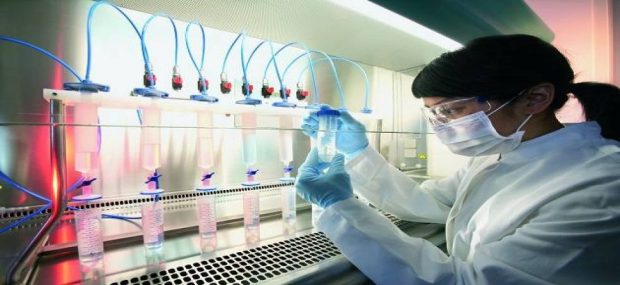
3D-printed Vascular Networks Pave way for artificial organs
PTI, May 5, 2019, 12:12 PM IST

Washington: Scientists have 3D-printed exquisitely entangled vascular networks that mimic the body’s natural passageways for blood, air and other vital fluids, an advance that may pave the way for developing functional artificial organs.
For the study, published in the journal Science, researchers 3D-printed a proof-of-principle — a hydrogel model of a lung-mimicking air sac in which airways deliver oxygen to surrounding blood vessels.
“Further, our organs actually contain independent vascular networks — like the airways and blood vessels of the lung or the bile ducts and blood vessels in the liver,” Miller said.
“These interpenetrating networks are physically and biochemically entangled, and the architecture itself is intimately related to tissue function. Ours is the first bioprinting technology that addresses the challenge of multivascularisation in a direct and comprehensive way,” he said.
Kelly Stevens, assistant professor at University of Washington (UW) in the US, said multivascularisation is important because form and function often go hand in hand.
The goal of bioprinting healthy, functional organs is driven by the need for organ transplants. Thousands of people are on transplant waiting lists across the world, and those who do eventually receive donor organs still face a lifetime of immune-suppressing drugs to prevent organ rejection.
Bioprinting has attracted intense interest over the past decade because it could theoretically address both problems by allowing doctors to print replacement organs from a patient’s own cells. A ready supply of functional organs could one day be deployed to treat millions of patients worldwide.
“We envision bioprinting becoming a major component of medicine within the next two decades,” Miller said. “The liver is especially interesting because it performs a mind-boggling 500 functions, likely second only to the brain,” Stevens said.
“The liver’s complexity means there is currently no machine or therapy that can replace all its functions when it fails. Bioprinted human organs might someday supply that therapy,” he said.
To address this challenge, the team created a new open-source bioprinting technology dubbed the “stereolithography apparatus for tissue engineering,” or SLATE. The system uses additive manufacturing to make soft hydrogels one layer at a time.
Layers are printed from a liquid pre-hydrogel solution that becomes a solid when exposed to blue light. A digital light processing projector shines light from below, displaying sequential 2D slices of the structure at high resolution, with pixel sizes ranging from 10-50 microns.
With each layer solidified in turn, an overhead arm raises the growing 3D gel just enough to expose liquid to the next image from the projector.
Tests of the lung-mimicking structure showed that the tissues were sturdy enough to avoid bursting during blood flow and pulsatile “breathing,” a rhythmic intake and outflow of air that simulated the pressures and frequencies of human breathing.
Tests found that red blood cells could take up oxygen as they flowed through a network of blood vessels surrounding the “breathing” air sac. This movement of oxygen is similar to the gas exchange that occurs in the lung’s alveolar air sacs.
In the tests of therapeutic implants for liver disease, the team 3D printed tissues, loaded them with primary liver cells and implanted them into mice.
The tissues had separate compartments for blood vessels and liver cells and were implanted in mice with chronic liver injury. Tests showed that the liver cells survived the implantation.
Udayavani is now on Telegram. Click here to join our channel and stay updated with the latest news.
Top News

Related Articles More

Study links overthinking to ‘constant communication’ between brain’s fear-centre, social behaviour

Mangaluru: Campco opposes WHO’s claim of arecanut being carcinogenic

10 month baby gets new heart, new life

World COPD Day: Know your lung function

As Delhi chokes with dangerous pollution levels, doctors warn of health risks for all
MUST WATCH
Latest Additions

Wanted to kill Ajmal Kasab who caused so much of pain, recalls 26/11 terror attack victim

Two retired revenue officials among four arrested in land grabbing case in Jammu

Kerala govt to revise manual for junior doctors, house surgeons

State can interfere with religious practices if they impede development, equality rights: SC

Four cheers at MP’s Kuno park; cheetah Neerva gives birth to cub quartet
Thanks for visiting Udayavani
You seem to have an Ad Blocker on.
To continue reading, please turn it off or whitelist Udayavani.


















